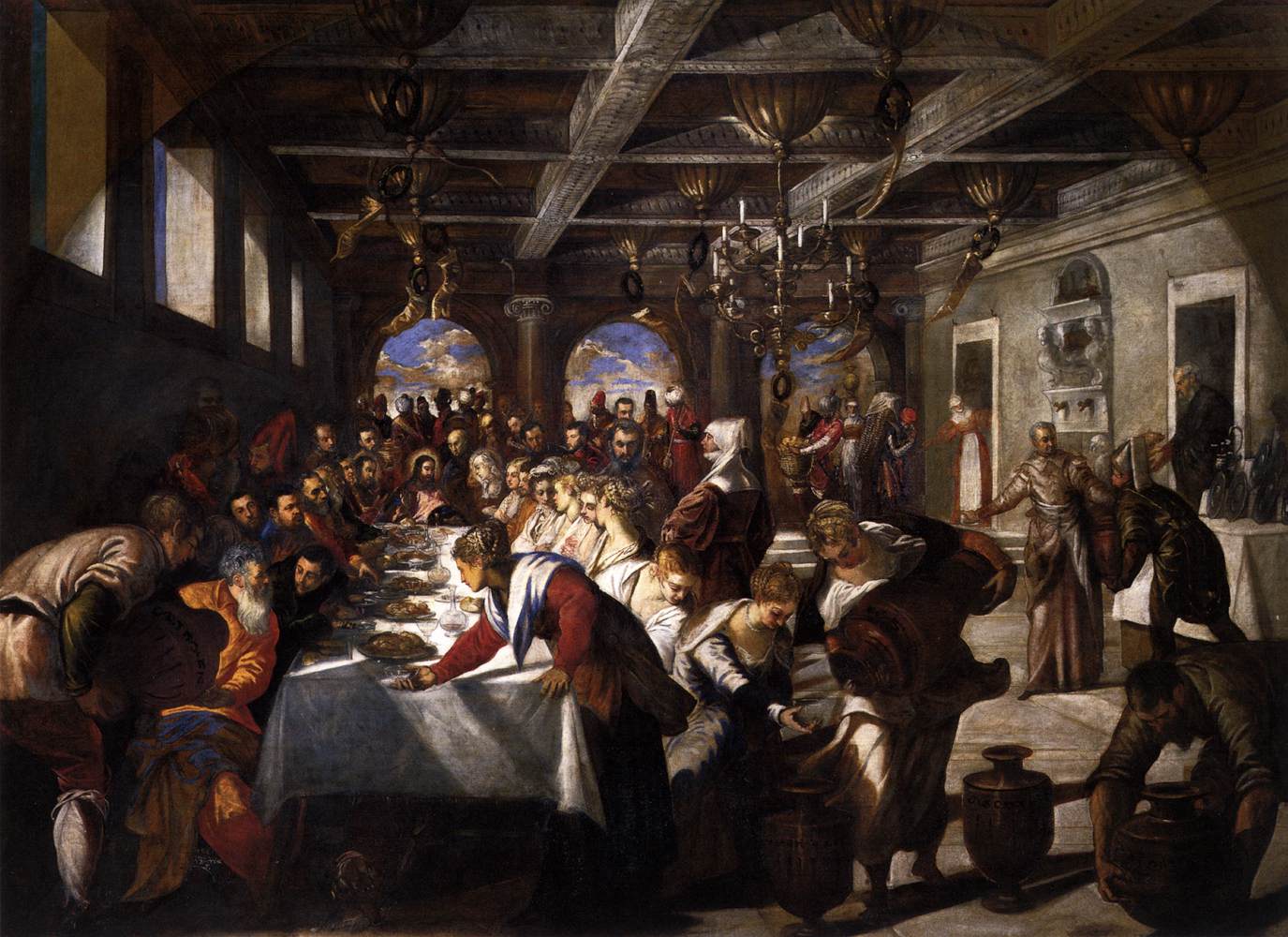-

-
Dear Brothers and Sisters, good morning!Before beginning the catechesis, I would like to greet a group of couples, celebrating their 50th wedding anniversaries. This, truly, is “the good wine” of the family! Yours is a testimony that the newlyweds – who I will greet later – and young people must learn. It is a beautiful testimony. Thank you for your testimony.After having commented on some parables of mercy, today we reflect on Jesus’ first miracle, which the evangelist John calls “signs,” because Jesus did not do them to arouse wonder, but to reveal the Father’s love. John (2:1-11), in fact, narrates the first of these prodigious signs, and it is carried out at Cana of Galilee. It is a sort of “entrance door” on which words and expressions are carved, which illumine the entire mystery of Christ and open the disciples’ hearts to faith. Let us look at some of them.In the introduction, we find the expression “Jesus and His disciples” (v. 2). Those that Jesus has called to follow Him He has united to Himself in a community and now, as one family, they are all invited to the wedding. Beginning His public ministry at the wedding feast of Cana, Jesus manifests Himself as the Spouse of the People of God, announced by the prophets, and He reveals to us the profundity of the relationship that unites us to Him: it is a new Covenant of love. What is at the foundation of our faith? — An act of mercy with which Jesus has united us to Himself. And the Christian life is the answer to this love. It is like the story of two who are in love. God and man meet one another, seek one another, find one another, celebrate and love one another: precisely like the loved and beloved in the Canticle of Canticles. All the rest comes as consequence of this relationship. The Church is Jesus’ family in which His love is poured out; it is this love that the Church cherishes and wishes to give to all.Understood also in the context of the Covenant, is Our Lady’s observation: “They have no wine” (v. 3). How is it possible to celebrate the wedding and to feast if what the prophets indicated, as an element typical of the Messianic banquet, is lacking? (cf. Amos 9:13-14; Joel2:24; Isaiah 25:6). Water is necessary to live, but wine expresses the abundance of the banquet and the joy of the celebration. It is a nuptial feast in which wine is lacking and the newlyweds are embarrassed by this. But can you imagine ending a wedding feast drinking tea? It would be an embarrassment. Wine is necessary for a celebration. In transforming the water into wine in the jars used “for the rites of purification of the Jews” (v. 6), Jesus carries out an eloquent sign. Jesus signals He is the fulfillment of the Law and the prophets. As John himself says elsewhere: “The Law was given through Moses; grace and truth came through Jesus Christ” (1:17).Mary’s words to the servants crown the nuptial picture: “Do whatever He tells you” (v. 5). It’s interesting: they are her last words reported by the Gospels: they are her legacy that she gives to all of us. Today, also, Our Lady says to us all: “Whatever He says to you – Jesus says to you –, do it.” It is the legacy she has left us: it’s beautiful! It is an expression that recalls the formula of faith used by the people of Israel at Sinai in answer to the promises of the Covenant: “All that the Lord has spoken we will do!” (Exodus 19:8). And indeed at Cana the servants obey. “Jesus said to them, ‘Fill the jars with water.’ And they filled them up to the brim. Again, He said to them, ‘Draw some out now and take it to the headwaiter.’ So they took it” (vv. 7-8). In these nuptials, the New Covenant is truly stipulated and to the Lord’s servants, namely to the whole Church is entrusted the new mission: “Do whatever He tells you!” To serve the Lord means to listen and to put His Word into practice. It is the simple, but essential recommendation of Jesus’ Mother and it is the Christian’s program of life. To draw from the jar is equivalent for each one of us to entrust ourselves to the Word of God to experience its efficacy in life. Then, together with the steward of the banquet who tasted the water that became wine, we too can exclaim: “You have kept the good wine until now” (v. 10). Yes, the Lord continues to keep that good wine for our salvation, just as it continues to gush from the pierced side of the Lord.The conclusion of the account sounds like a sentence: “Jesus did this as the beginning of His signs’ in Cana in Galilee, and so revealed His glory, and His disciples began to believe in Him” (v. 11). The wedding at Cana is much more than the simple account of Jesus’ first miracle. As a treasure chest, Jesus keeps the secret of His person and the purpose of His coming: the awaited Spouse begins the nuptials that are fulfilled in the Paschal Mystery. In these nuptials, Jesus unites His disciples to Himself with a new and definitive Covenant. At Cana, Jesus’ disciples become His family and at Cana, the faith of the Church was born. We are all invited to this wedding feast, as the new wine is no longer lacking!Source: Zenit





